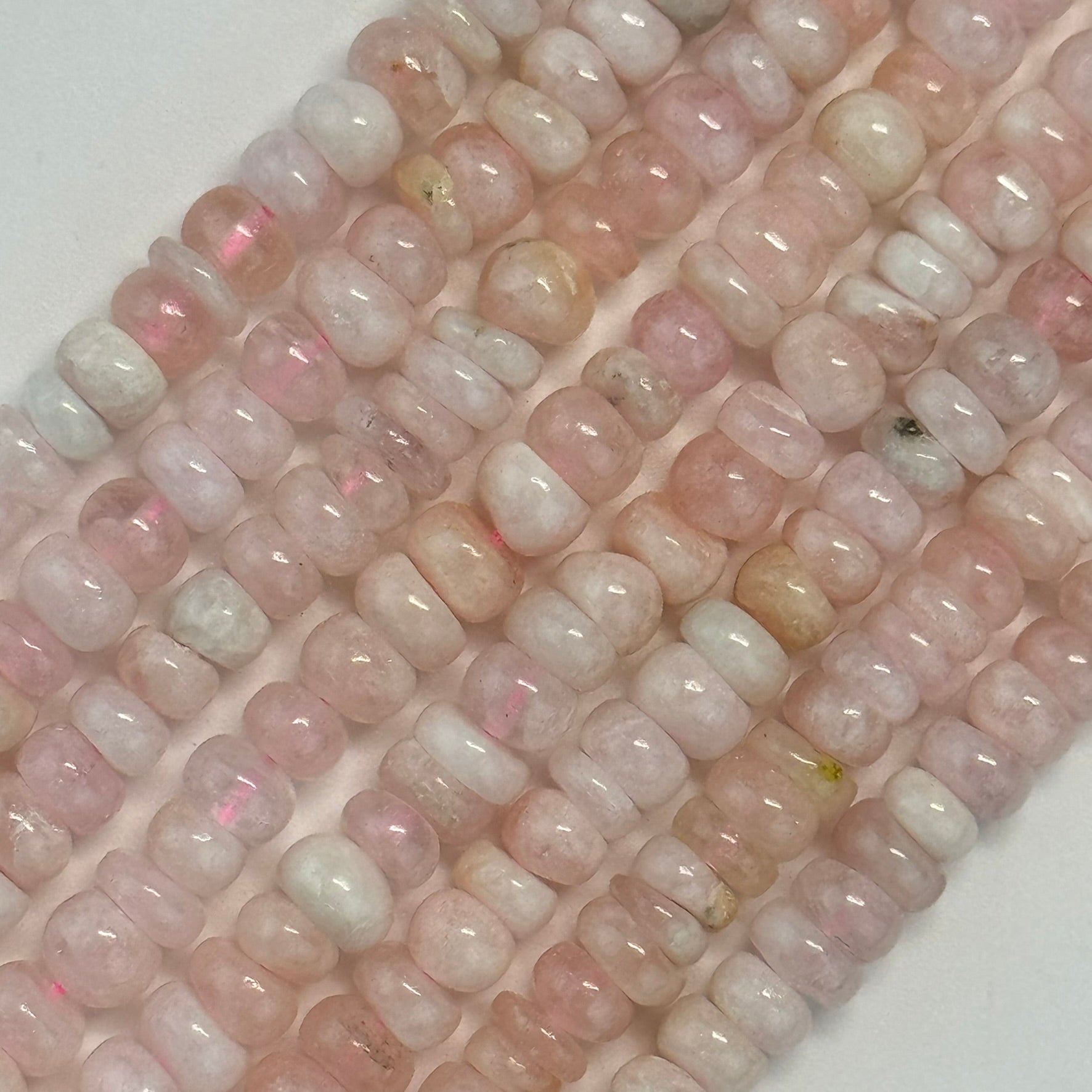
Types of Agate Gemstone Beads: A Scientific Overview
Share
Types of Agate Gemstone Beads: A Scientific Overview
Agate is a cryptocrystalline variety of quartz (SiO₂) belonging to the chalcedony group, distinguished by its concentric banding, mineral inclusions, and diverse coloration. These beads form through the slow deposition of silica-rich solutions in volcanic and metamorphic rock cavities, influenced by geochemical conditions such as pH, temperature, and mineral saturation. Below is a classification of different agate gemstone beads, analyzed from a gemological and mineralogical perspective.
- Botswana Agate Beads
- Crystal System: Trigonal (Quartz Group)
- Mineral Class: Tectosilicate (Chalcedony)
- Formation: Botswana agate develops through successive rhythmic crystallization of silica-rich hydrothermal fluids within volcanic cavities, forming finely banded microcrystalline structures.
Botswana Agate Dodecahedron Beads: These twelve-sided beads maximize surface refraction and showcase rhythmic banding caused by fluctuating silica saturation. Explore Botswana Agate Beads.
Botswana Agate Diamond Cut Beads: Precision-faceted to enhance optical interactions, these beads exhibit complex interference patterns due to varying iron and manganese trace elements. Discover Botswana Agate Diamond Cut Beads.
Botswana Agate Faceted Rondelle Beads: Their geometry optimizes light reflection, amplifying the visible gradation of chalcedony’s fibrous microstructures.

Rondelle Beads - Polished Collection
Explore our collection of Rondelle Beads with polished finish, perfect for elegant and timeless jewelry designs. Each bead is expertly smoothed to enhance its natural color and shine.
View All Polished Rondelle Beads- Gray and White Agate Beads
- Crystal System: Trigonal
- Mineral Class: Tectosilicate (Chalcedony)
- Formation: Low-temperature silica precipitation results in color variation due to trace impurities like aluminum and iron oxides.
Gray Agate Lentil Beads: Formed in stable low-energy hydrothermal environments, these beads exhibit uniform crystallite growth within microcrystalline silica matrices.
White Agate Lentil Beads: Nearly pure chalcedony, with its milky appearance derived from light-scattering microinclusions of silica spherulites.
- Blue Lace Agate Beads
- Crystal System: Trigonal
- Mineral Class: Tectosilicate (Chalcedony)
- Formation: Blue lace agate forms through silica deposition in volcanic vesicles, creating parallel fibrous chalcedony layers with diffraction-induced color variations.
Blue Lace Agate Space Ship Beads: Featuring periodic color banding, these beads exhibit Bragg scattering effects under polarized light. Shop Blue Lace Agate Beads.
Blue Lace Agate AAA Round Polished Beads: High-grade specimens with homogenous crystal alignment, enhancing translucency.
Blue Lace Agate Faceted Round Beads: Precision-cut to exploit chalcedony’s optical anisotropy, maximizing birefringent effects.
- Crazy Lace Agate Beads
- Crystal System: Trigonal
- Mineral Class: Tectosilicate (Chalcedony with Iron Oxides)
- Formation: Geochemical interactions between iron-rich fluids and silica solutions create swirling iron oxide inclusions, forming chaotic banding structures.
Crazy Lace Agate Faceted Barrel Beads (8×6 mm): Characterized by hematite and goethite inclusions, which produce complex fractal banding.
Golden Crazy Lace Agate Polished Round Beads: Iron oxide staining enhances yellow and ochre hues, indicating suboxic hydrothermal conditions.
Crazy Red Agate Polished Round Beads (8mm): Hematite-induced coloration results from ferric ion substitutions within the chalcedony lattice.
- Moss and Tree Agate Beads
- Crystal System: Trigonal
- Mineral Class: Tectosilicate (Chalcedony with Manganese/Iron Inclusions)
- Formation: Dendritic inclusions form through colloidal precipitation of manganese and iron oxides within silica-saturated hydrothermal systems.
Moss Agate Polished Round Beads (AAA Quality): Exhibiting intricate manganese dendrites, these beads form through fluid diffusion-controlled mineralization.
Tree Moss Agate Polished Round Beads: Characterized by fractal-like iron oxide networks, resembling vascular plant growth patterns.
- Sakura Agate Beads
- Crystal System: Trigonal
- Mineral Class: Tectosilicate (Chalcedony with Plume Inclusions)
- Formation: Plume-like mineral growths occur due to silica supersaturation and heterogeneous nucleation within confined geochemical environments.
Sakura Agate Rondelle Beads: Exhibiting cloud-like inclusions, these beads contain complex aggregates of iron hydroxides.
Green Sakura Agate Polished Round Beads: Derived from trace chromium and iron impurities, producing distinct floral-like internal structures.
- Additional Agate Varieties
- Crystal System: Trigonal
- Mineral Class: Tectosilicate (Chalcedony)
- Formation: Hydrothermal mineralization in diverse geochemical environments results in a broad range of optical and structural variations.
Pink Fossil Agate Polished Round Beads (8mm): Fossilized microfossils within a chalcedony matrix contribute to pinkish hues.
Golden Dendritic Agate Polished Round Beads: Metallic dendrites of iron and manganese oxides nucleate in low-energy sedimentary conditions.
Dyed Green Agate Polished Round Beads (20mm): Synthetic enhancement modifies refractive indices while preserving natural microstructure.
Orange Sakura Agate Polished Round Beads: Displays interference coloration due to mineralogical diffusion.
White Lace Agate Chalcedony Frosted Rondelle Beads: Frosted surfaces modify refractive properties, reducing total internal reflection effects.
Conclusion
Agate gemstone beads offer a fascinating study of silica mineralization under varying geochemical conditions. Their unique properties—ranging from optical anisotropy, crystallographic banding, and mineral inclusions—make them an essential component in jewelry craftsmanship and mineralogical research. Jewelry makers and gemologists alike appreciate these beads not only for their aesthetic appeal but also for the rich geological history encapsulated within each specimen.